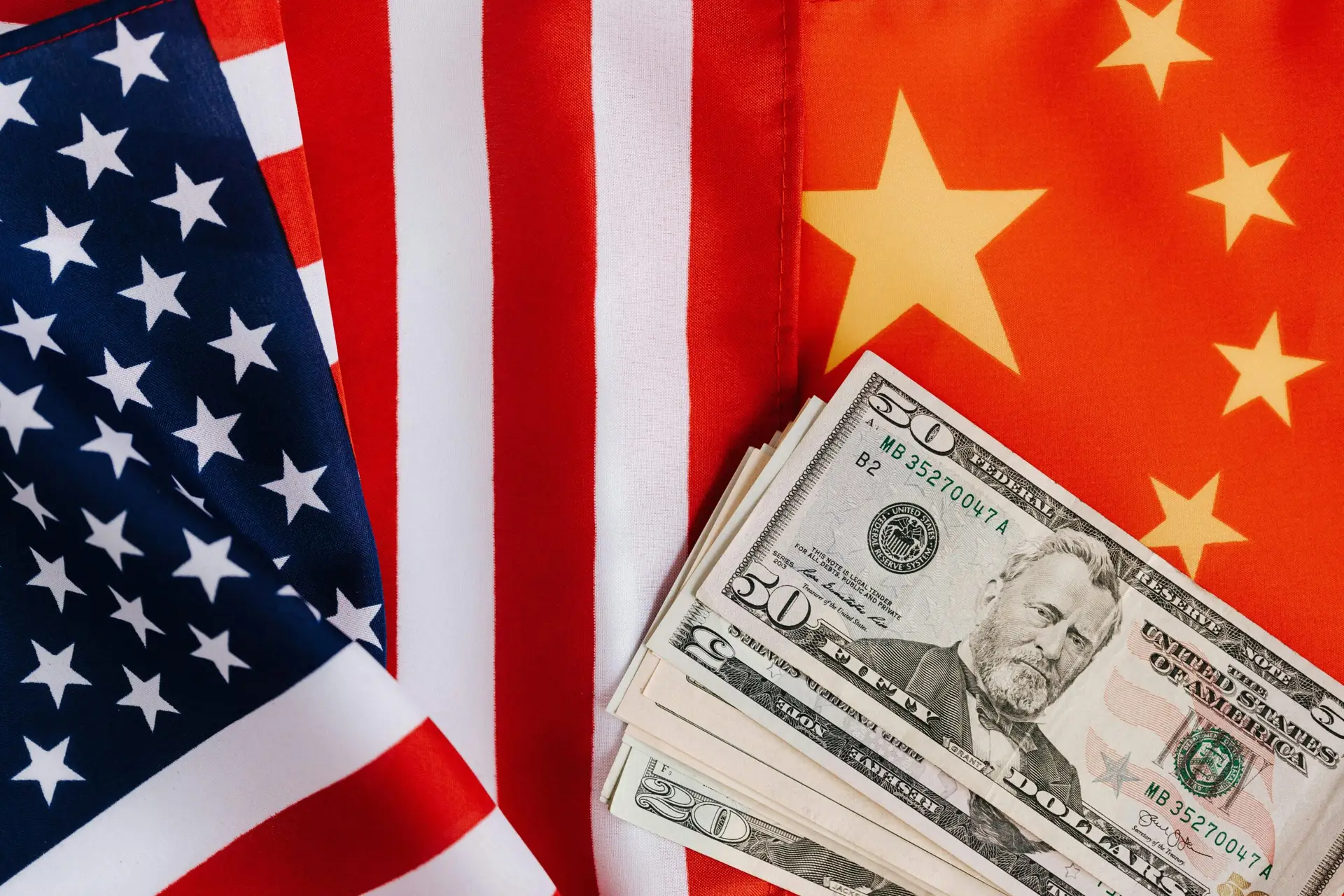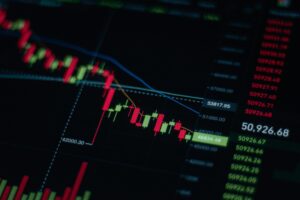Gain insights into timber market opportunities and avoid trade risks!
Register Now LumberFlow.com, get exclusive industry analysis, real-time data push and in-depth market reports.
In-depth analysis of Sino-US timber trade: challenges, opportunities and long-term impact of the 90-day truce
Expert Guide:The 90-day tariff truce agreement reached by China and the United States in May 2025 brought a brief respite to the turbulent timber and log trade market, but also formed a complex "dual track" situation. LumberFlow's analysis aims to deeply interpret the reality of the coexistence of the temporary reduction of tariffs on processed wood products and the continued ban on US logs in this context, and its far-reaching impact on the global supply chain, inventory management, shipping logistics and market sentiment, and provide traders with forward-looking response strategies.
1. Interpretation of the 90-day truce: Tax reduction for processed products and log ban in parallel
As of mid-May 2025, China and the United States agreed to implement a 90-day tariff reduction starting on May 14:
- US tariffs on China:Tariffs on certain Chinese goods (including some wood products) were reduced from as high as 145% to 30%. This 30% is composed of the 10% "equivalent" basic tariff and the 20% fentanyl-related tariff.
- China's tariffs on the US: Retaliatory tariffs on certain U.S. goods (including some wood products, but excluding banned logs) were reduced from as high as 125% to 10%.
- Wood products range:The agreement initially covers about 91% of timber trade products, such as hardwood panels and solid wood furniture. The official announcement did not elaborate on the specific HS code details, but it is generally believed that sawn timber (HS 4407), veneer (HS 4408) and wood-based panels (HS 4410-4412) should be included in the reduction if they were previously affected by general retaliatory tariffs.
The core issue: The US log ban continues. Although S3 and 1 initially suggested that "logs" might fall within the scope of the tariff suspension, multiple sources confirmed that China's General Administration of Customs (GACC) Announcement No. 29 of 2025 (suspending imports of U.S. logs from March 4, 2025) remains in effect. The official reason was plant quarantine issues (such as the discovery of bark beetles), but its timing coincided with escalating trade tensions, suggesting that it also has non-tariff barriers and geopolitical leverage. This ban is earlier than the April 2, 2025 deadline that China promised to suspend non-tariff barriers, so it is not within the scope of this suspension.
This "dual track system" directly led to a divergent market response: US processed wood product exporters received a temporary respite, while log exporters continued to face the dilemma of zero market access. Market sentiment responded quickly, and container shipping bookings from China to the United States surged after the truce announcement (data from a certain platform increased by 35%), reversing the sharp decline of 64% in bookings during the peak period of tariff uncertainty in early April.
2. Inventory and supply chain analysis: imbalance and reconstruction
A. China's timber and log inventory and procurement trends
Port Inventory: In May 2025, the log inventory in major Chinese ports was about 3.5 million cubic meters, down from April and February (4 million cubic meters). The average daily port shipments were stable at 60,000-70,000 cubic meters, indicating that arrivals were slowing or consumption was faster than replenishment. If the inventory fell below 3 million cubic meters, it would enhance the bargaining power of suppliers such as New Zealand.
Import data for the first quarter of 2025 (before the ban takes full effect):
- Total log imports: 8.07 million cubic meters (down 9% year-on-year), valued at $1.352 billion (down 10% year-on-year).
- Softwood logs: 5.78 million cubic meters (down 7% year-on-year), accounting for 72% of the total. Hardwood logs: 2.28 million cubic meters (down 14% year-on-year).
- Average CIF price: overall US$168/cubic meter (down 1.3% year-on-year); softwood US$127/cubic meter (down 5% year-on-year); hardwood US$271/cubic meter (up 6% year-on-year). The decline in volume and increase in price of hardwood indicate that demand or supply of specific categories is tight.
Impact of the US log ban:China will officially stop importing logs from the United States from April 2025. In Q1, the United States exported 343,000 cubic meters of logs to China (a year-on-year decrease of 17%, a value of US$155 million, and a year-on-year increase of 1%), reflecting the execution of high-value orders before the ban came into effect. In response, Chinese importers adjusted their procurement structure from New Zealand, reducing radiata pine and increasing Douglas fir. New Zealand exported 4.2 million cubic meters to China in Q1, accounting for 52% of China's total log imports. Q1 data for other major suppliers: Papua New Guinea 479,000 cubic meters (-13%), Russia 408,000 cubic meters (-19%), Japan 380,000 cubic meters (+25%), Canada 336,000 cubic meters (+11%), Germany 221,000 cubic meters (-46%).
B. North American Lumber and Log Inventories and Export Dilemma
Inventory backlog:Since the Chinese ban came into effect, U.S. log exporters have faced serious inventory backlogs and declining profits. For example, $250,000 worth of wood shipped to China was stranded in Grays Harbor for two months. Some exporters who are highly dependent on the Chinese market (accounting for 75-85% of business) are facing difficulties and even factory risks. The domestic market has shown regional differentiation, with the price of exported logs falling in the north and high prices and unsalable in the south.
Hardwood Industry:The closure of the Chinese market has dealt a heavy blow to US hardwood (the largest export market, with an average monthly export of nearly 35 million board feet of sawn timber to China in 2024), especially to Eastern sawmills that rely on red oak logs. Pacific Northwest (PNW) log prices were stable and high before the ban ($610-660/thousand board feet), but have come under pressure since the ban. Fastmarkets had expected the PNW sawn log market to pick up in 2025 due to tighter supply, but the Chinese ban has added uncertainty.
U.S. export data for the first quarter of 2025:
- Total exports of wood products to China: US$330 million (up 5% year-on-year), but China's statistical import volume fell 9% to 620,000 cubic meters, causing the average unit price to soar by 16%, perhaps due to high-value products/contract fulfillment.
- Log exports to China: 343,000 cubic meters (a decrease of 17% in quantity and an increase of 1% in value year-on-year).
- Southern pine (SYP) sawn timber exports to China: down 38% year-on-year to 2.5 million board feet. In March, the total timber shipments (logs and sawn timber) from the United States to China were 195,000 cubic meters (down 23% year-on-year).
These data reveal that China has begun strategic inventory management and procurement diversification before the full implementation of the US log ban, while certain regions and product lines in the United States (such as PNW softwood and Eastern hardwood) are facing local surpluses and price pressures due to the ban.
3. Trends in maritime logistics: “whiplash effect” and soaring costs
Drastic changes in trade policy have had a “whiplash effect” on the transpacific container market.
- Spot freight rates soar: Platts (May 16) data showed that the freight rate from North Asia to the East Coast of North America (PCR5) rose to $4,500/FEU (up $1,100), and the freight rate from North Asia to the West Coast of North America (PCR13) rose to $3,500/FEU (up $1,100). The Drewry WCI (May 15) composite index rose by 8%, with the freight rate from Shanghai to Los Angeles rising by 16% to $3,136/FEU, and the freight rate from Shanghai to New York rising by 19% to $4,350/FEU.
- Capacity Management: Before the truce, high tariffs had caused the Sino-US shipping volume to drop by more than 35%. In response to demand fluctuations, carriers tightened capacity by blanking flights from the end of May to June (the US West Coast route had cut about 30%, and the US East Coast route had cut about 40%) to support GRI and PSS.
- Port congestion: Congestion at major Asian ports (Pusan, Shanghai, Ningbo, Singapore) has caused shipping delays of 10-14 days, exacerbating the logistics pressure caused by the surge in demand.
Logs are traditionally transported in bulk, while sawn timber is suitable for containers. The current surge in container freight rates will significantly increase the cost of transporting sawn timber, and competition for shipping space is fierce. In addition, the United States plans to impose new port fees on Chinese-built/owned ships, which are not targeted at timber, but add uncertainty to future costs for overall maritime logistics.
4. Risk Mitigation and Strategic Hedging for Stakeholders
A. For Chinese importers:
- Optimizing short-term purchases: During the 90-day window period, actively import eligible U.S. processed wood products and make full use of the temporary low tariffs of 10%, but carefully calculate the landed costs after high freight costs.
- Deepening supplier diversity: In view of the US log ban, it is necessary to accelerate and consolidate cooperation with log suppliers in New Zealand, Russia, Europe (Germany, France, Latvia, etc.), Canada, and Southeast Asia or South America. Pay attention to the tree species characteristics, quality stability, supply volume and price of each supply source.
- Strengthening contract risk management: Include price adjustment clauses (in case of tariff restoration) and force majeure clauses (explicitly covering sudden tariffs or bans) in contracts, and consider using financial instruments to hedge exchange rate risks (such as forward contracts).
B. For North American Suppliers:
- Seizing the export window for processed products: Actively market and ship eligible sawn timber, wood-based panels and furniture during the period when China’s retaliatory tariffs were reduced to 10%.
- Firmly promote market diversification:In particular, log exporters need to put market diversification at the core of their strategy and vigorously explore alternative markets such as Canada, Mexico, Vietnam, India, Japan and the United States.
- Implementing flexible production and marketing strategies: Carefully manage log harvesting and sawn timber production to avoid product backlogs that are overly dependent on a single market. If prices are below cost, consider temporarily reducing production.
- Improve contract terms: When signing contracts with all international buyers, include clauses to deal with tariff fluctuations and non-tariff barriers, and clarify the division of responsibilities under trade terms (such as FOB and DDP). Hedge the exchange rate risk of the US dollar against the local currency of each market.
5. Transshipment Dilemma and Review of Alternative Supply Chains
Simply transshipping U.S. logs through a third country (without substantially changing the origin) to circumvent the Chinese ban is not a wise choice, as it faces extremely high legal risks (violating the rules of origin and customs regulations) and practical difficulties. Both China and the United States have strengthened their scrutiny of tariff/ban evasion. However, if U.S. logs are legally and substantially processed in a third country (such as Vietnam) (such as sawn into boards) and comply with local rules of origin, the product becomes the origin of the third country, which is a legal transfer of the supply chain, not circumvention.
When seeking to replace the supply of American logs, China may focus on evaluating: New Zealand (the main source of radiata pine and Douglas fir, but the room for growth may be limited), Russia (the Far East has great potential, but has its own log export restrictions and geopolitical considerations), Europe (Germany, France, etc., but face insect pests and their own processing needs), Canada (mainly SPF sawn timber, with limited supply in British Columbia), Southeast Asia (tropical timber, Vietnam is a processing center), South America (plantation softwood) and Africa (tropical hardwood, but some countries also have export restrictions).
VI. Long-term Outlook and Strategic Recommendations for Sino-US Timber Trade
After the 90-day truce: There may be scenarios such as an extension of the truce, a new agreement or a restoration of high tariffs, depending on the progress of the broader China-US trade negotiations, the domestic political and economic conditions of both sides and the overall geopolitical climate. Analysts believe that even if an agreement is reached, the effective tariff rate of US goods on Chinese goods may remain stable at 15-40% in the long term, which is higher than the historical level.
The Future of the U.S. Log Ban:The lifting of the ban not only involves the resolution of technical phytosanitary issues (such as pest risk mitigation and inspection procedures), but is also linked to the overall trade relationship. The ban may continue to exist as an important trade lever. The trade rules, customs and phytosanitary control consultation mechanisms established by China and the United States may provide a slow path for resolution.
Lasting Impact:
- Global trade flows shift permanently: The market and supply source diversification forced on U.S. exporters and Chinese importers could lead to lasting adjustments in trade patterns.
- Supply chain resilience first:Enterprises will pay more attention to the diversification and risk resistance of the supply chain rather than simply pursuing cost optimization.
- Baseline cost increases:It is expected that the average tariff level and uncertainty of Sino-US timber trade will be higher than in the past, and companies need to incorporate this "new normal" into their long-term plans.
LumberFlow Strategic Advice:
- Chinese Importers: Seize the window of processed products in the short term, firmly promote procurement diversification in the medium and long term, strengthen contract risk management, and pay attention to the development of domestic alternative materials.
- North American Suppliers: In the short term, take advantage of opportunities in processed products. In the medium and long term (especially log traders), they must regard market diversification as the core of survival and development, flexibly adjust production and sales, and advocate stable trade policies and technical solutions to log bans through industry associations.
Core Mission: All market participants should build agility and resilience into their business models. The complexity and volatility of the US-China trade relationship will continue, and success will depend on the ability to quickly adapt to market changes, diversify risks, and make informed decisions based on continuous monitoring of trade policies and geopolitical developments.
Stay ahead and control the future!
Visit now LumberFlow.com Register to unlock more in-depth market analysis, customized data services and expert advice to help you move forward steadily in complex markets.





